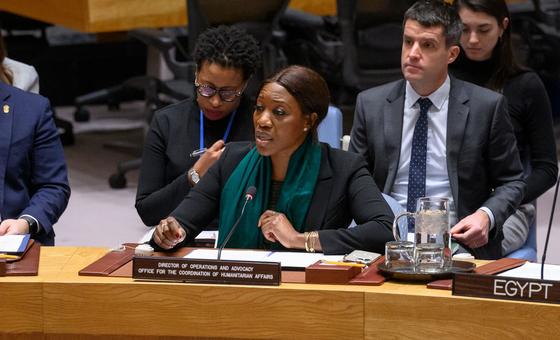
Addressing the Security Council on Monday, Edem Wosornu, Director of the Advocacy and Operations Division at the UN aid coordination office (OCHA) described the unfolding disaster as “a humanitarian crisis of staggering proportions.”
This “man-made” catastrophe, driven by relentless conflict, has dismantled food systems and critical infrastructure, leaving millions in imminent danger, she explained.
Evidence of famine mounts
“Famine conditions are now present in five areas,” Ms. Wosornu stated, highlighting Zamzam, Al Salam, and Abu Shouk camps for the internally-displaced, as well as the western Nuba Mountains.
The Food and Agriculture Organization (FAO) reported that conflict and displacement are the main drivers of food insecurity, “exacerbated by restricted humanitarian access,” according to Deputy Director-General Beth Bechdol.
The latest Integrated Food Security Phase Classification (IPC) analysis underscores the disproportionate impact on vulnerable groups, particularly women, children, and the elderly.
Disrupted food production and collapsing market conditions have compounded the crisis.
The IPC Committee has projected that famine could spread to five additional regions, including Um Kadadah and El Fasher, by mid-2025, with 17 other areas at high risk without urgent intervention.
Ms. Bechdol reminded the Council of the dire consequences of such crises: “As we have learned from these extreme crises, tens of thousands of deaths have already occurred before any famine was classified.”
Recent assessments indicate that over 16 per cent of households in affected zones are currently experiencing catastrophic food insecurity.
Aid delivery challenges
Despite continued efforts, logistical barriers obstruct the delivery of humanitarian aid.
“On 25 December a convoy of 28 trucks arrived in Khartoum from Port Sudan with food, nutrition supplies and other assistance,” which marked a step forward, Ms. Wosornu explained. Yet, challenges remain.
“Key areas in South Kordofan are effectively cut off from external assistance,” while “visas for humanitarian personnel are not being granted swiftly enough,” she stated.
New inspection protocols at the Adre crossing, crucial for operations in Darfur, have also further delayed the delivery of aid.
Almost 90 per cent of displaced households are currently unable to afford food.
Unified call for action
Both Ms. Wosornu and Ms. Bechdol issued an appeal for international support during the Security Council briefing.
They urged governments to prioritise funding, ensure safe relief routes, and press involved parties to cease hostilities.
“Immediate and unimpeded” humanitarian access is essential, said Ms. Bechdol, in order for partners to be able to deliver “multi-sectoral humanitarian assistance”.
The 2025 Sudan Humanitarian Needs and Response Plan calls for $4.2 billion to support 21 million people, with an additional $1.8 billion required for refugees in neighbouring countries.
A critical juncture
The FAO underscored the importance of addressing agricultural disruptions and rebuilding food systems alongside immediate relief efforts.
“When farmers can access land and inputs, they will produce food,” Ms. Bechdol stated.
According to the IPC analysis, the crisis is at a pivotal moment. Without decisive action to stabilise food security, the situation is likely to worsen.
“Millions of lives are even further at risk,” Ms. Bechdol concluded, “and so is the stability of many nations in the region,” she emphasised.
